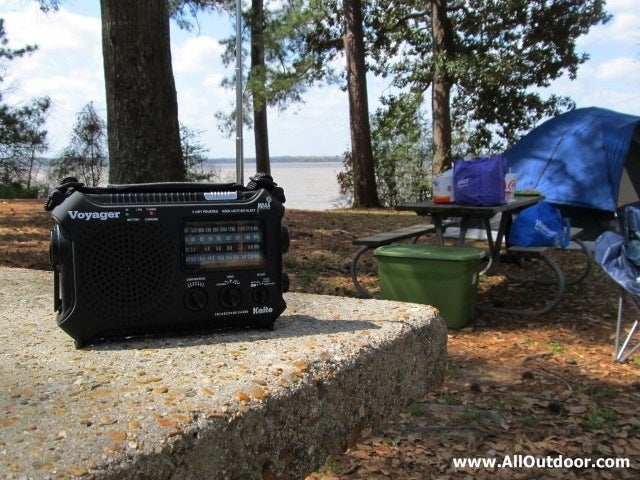Tips on Picking an Emergency Radio
Kevin Felts 04.19.17

Some kind of disaster has happened and you pull out the AM/FM emergency radio. This could be anything that shuts the power down and you want some local news. Those of us who live in hurricane affected areas know the drill.
After Hurricane Rita in 2005 my family and I went 18 days without electricity. In the evenings we would sit around a table playing board games listening to the local radio station. The radio station owner would broadcast news, such as updates from the county sheriff and where food and water would be distributed.
For those of you who are in the market to buy an AM/FM radio, what are some of the things you want to look for?
Solar Rechargeable
Batteries will be difficult to find during a prolonged power outage. Having a radio that can recharge via solar power would be great. Set the radio outside during the day and use it for entertainment at night.
Some radios have a solar panel large enough to power the radio in daylight even without batteries. This would be ideal for those prolonged power outages.
However, just because a radio has a solar panel does not mean it can work without batteries in direct sunlight. A small radio I have will not work when the batteries are dead, even with the solar panel in direct sunlight.
USB Rechargeable
There are a lot of solar products on the market that are designed to charge a cell phone while hiking or camping. They have a slightly larger solar panel than what is on the radio. As such, the panel will be able to offer a better charge.
In other words, take something that is designed to charge a cell phone and use it to charge your radio after a disaster.
If something were to happen to the solar panel of your radio, say fall off a table and break, you have a backup method for recharging.
Emergency Radio Range
I live in a rural area and the nearest city is close to 100 miles away. A radio I bought several years ago would pick up one station from the nearest city, which has something like six stations. If I wanted to know what was happening in the nearest city, I was pretty much out of luck.
Another emergency radio I bought does good to pick up a station just 20 miles away.
If you live in a city, range may not be that important. For those of us who live in rural areas, at least a 100 mile range is ideal.
AM, FM, Shortwave, NOAA Radio
If you are prepping for a worldwide disaster, look for something with shortwave.
If you live in an area affected by storms, tornadoes, hurricanes, you need something with National Oceanic and Atmospheric Administration (NOAA) service.
Extra Antenna
If you want the extra range or better shortwave, check to see if the radio will accept and external antenna.
We already mentioned range, which should be factory out-of-the-box of at least 100 miles.
To expand the standard range, let’s consider a radio that will accept an external antenna.
What Did We Miss?
I listed the things that I look for in an emergency radio. What do you look for?
Depending on location and types of disasters that affect your area, you may be looking for something special in an emergency radio.